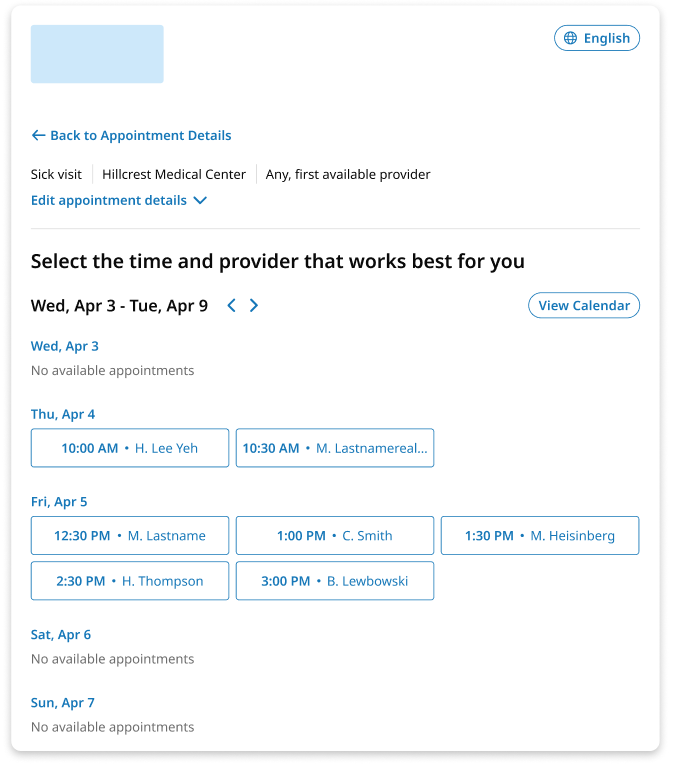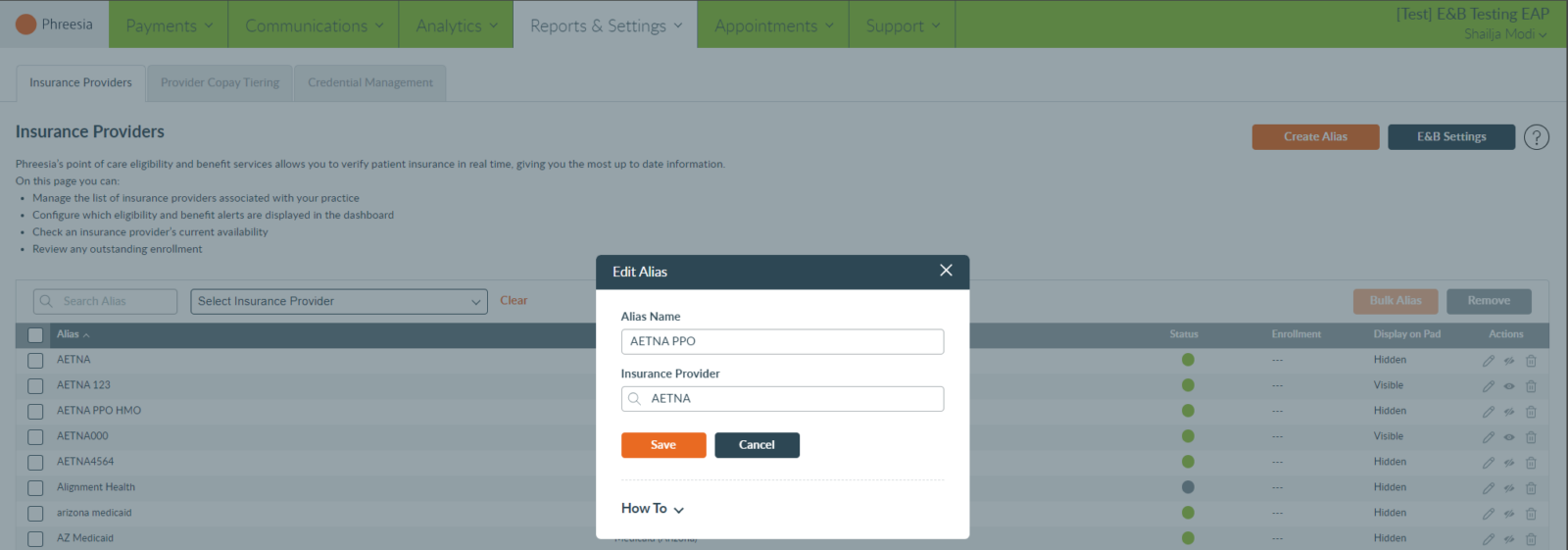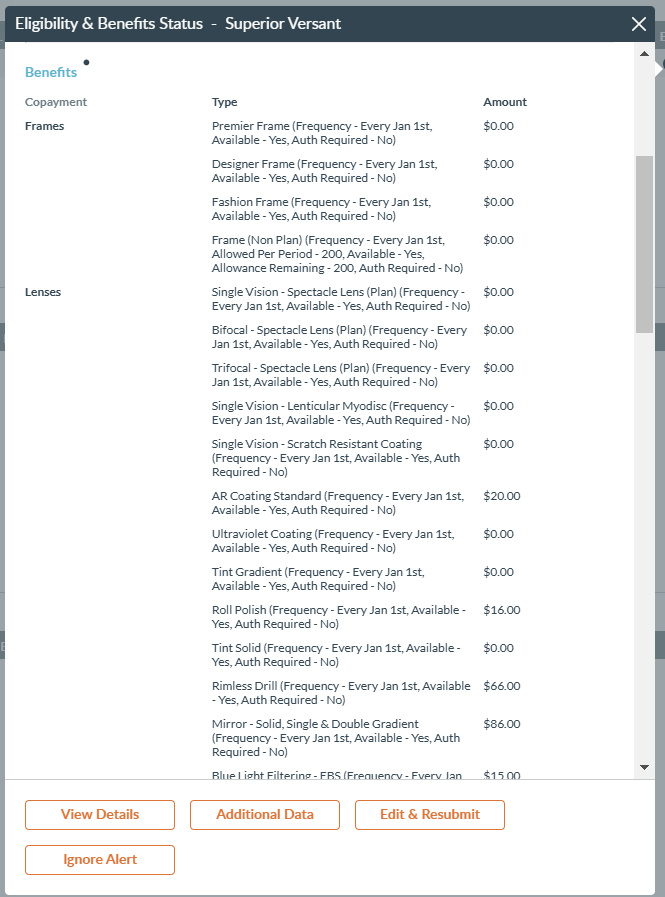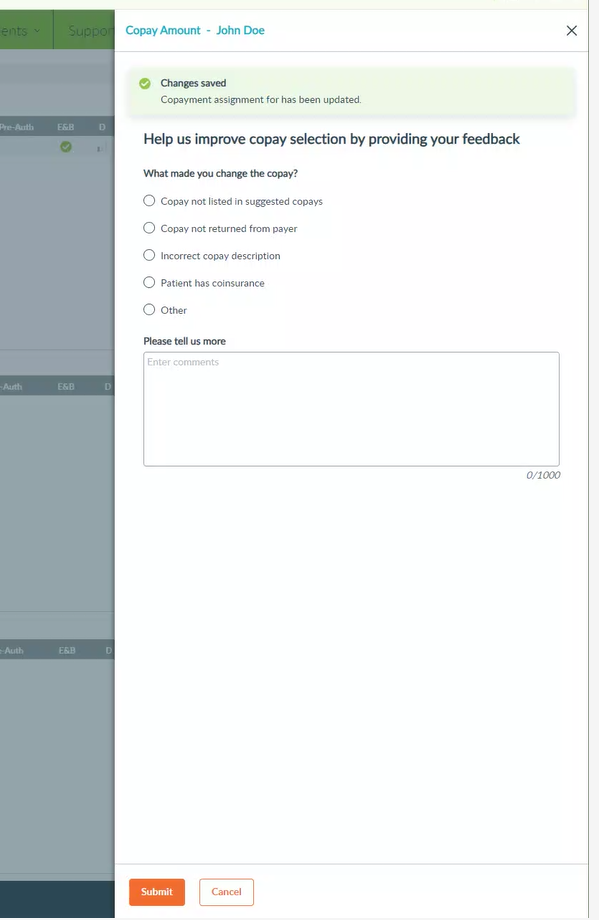- Summary
Featured
- Eligibility & Benefits
- Registration
- Standardized content
- Confirm patients’ identities and maintain compliance with a standardized Welcome module
- New version of Tobacco Use module now available
- New version of Sexual History module now available
- Long versions of the Mood and Feelings Questionnaire (MFQ) module now available
- Brief Patient Health Questionnaire (Brief-PHQ) module now available
- Pelvic Floor Distress Inventory (PFDI-20) module now available
- World Health Organization Disability Assessment Schedule (WHODAS II) module now available
Summary
Don’t have time to read the entire 24.12 Release Notes? We understand—you’re busy! Use the table of contents on the left to easily jump to different sections, if needed.
 Featured
Featured
Reduce no-shows and save staff hundreds of calls with the Patient Engagement Suite
What’s new: We’re offering a no-risk trial of our Patient Engagement Suite!
How this helps you: You can communicate with patients between visits, gain valuable feedback, build your brand, reduce no-shows and keep staff off the phone with our patient engagement tools. The suite includes:
- Appointment Reminders: Sends automated text messages, emails and voice calls to patients before their scheduled visit. Patients can confirm, cancel or reschedule their visit directly from the reminder message, and staff can view patient responses in the Phreesia Dashboard.
- Patient Chat: Allows you to communicate with patients quickly, conveniently and safely by sending two-way text messages from the Phreesia Dashboard.
- Patient Surveys: Automatically prompts your patients to provide real-time, actionable feedback. You can track your organization’s Net Promoter Score®, measure key drivers of patient satisfaction and direct patients to online review sites.
Next steps: Reach out to your Phreesia representative to take advantage of this trial.
Rebook cancellations in 3.5 minutes—with no extra work from staff
What’s new: Phreesia’s Appointment Accelerator tool is coming to eClinicalWorks!
How this helps you: You can accelerate care and keep clinicians’ schedules full without a single phone call. Your staff can get back 8 minutes per filled appointment!
Appointment Accelerator fills openings in your schedule with clinically relevant patients who are booked further in the future. When a slot opens or a provider’s schedule changes, we’ll automatically text patients to offer them earlier slots. Plus, you’ll recapture no-shows and reduce the risk of patient attrition.
Next steps: Reach out to your Phreesia representative to learn more.
Increase patient self-service rates by 10% with PadX
What’s new: We’re retiring Pad5 and bringing you the new and improved PadX.
How this helps you:
- PadX is user-friendly for patients and staff with a slim, lightweight design.
- It has a high-speed processor to facilitate quick patient workflows.
- It helps increase self-service utilization and time-of-service collections without staff intervention.
- PadX accessories, such as card readers, help you provide patients with convenient payment options.
Next steps: Reach out to your Phreesia representative to learn more!
Increase bookings and access to care with an improved self-scheduling experience
What’s new: Our self-scheduling forms provide a more accessible and intuitive experience. Patients can now see the addresses of your locations and will be presented with a week of slots rather than a day, so they can easily find the time and place that work best for them.
How this helps you: A simpler self-scheduling process means more patients will book online, which decreases inbound phone calls, saves staff time and boosts access to care.
Next steps: This update is now available for early access. We’ll be transitioning all organizations that use self-scheduling to the updated experience soon.

Eligibility & Benefits
Automatically re-run E&B after alias (insurance provider) changes
What’s new: Adding, editing or removing an insurance provider alias will automatically trigger a new E&B check.
How this helps you: You’ll no longer need to manually re-run E&B checks when you alter aliases, which means you’ll see accurate E&B data quicker.
Next steps: This update will be automatically available upon release.

See additional information about Superior Vision patients’ coverage
What’s new: We’ll automatically display additional details for Superior Vision, such as how often a benefit is available and when a patient can use a benefit.
How this helps you: You’ll no longer need to contact the payer to find this information.
Next steps: This update will be automatically available upon release.

Help improve copay accuracy
What’s new: It’s easier to document feedback when you need to reselect a copay. After you reselect a copay, a new panel will appear with radio buttons and a free text option to quickly provide feedback.
How this helps you: Feedback helps inform future copay selections, which increases copay accuracy going forward—and saves you time. Now it’s easier to provide it, as you’ll no longer need to scroll down the copay panel or select a dropdown.
Next steps: This update will be automatically available upon release.

Registration
Ensure all Patient Encounter data saves properly—even during downtime
What’s new: You can now export Patient Encounter documents from the “Patients” page.
How this helps you: In the unlikely event that your integration isn’t functioning and patient data fails to export properly, you can visit the “Patients” page and export the Patient Encounter yourself once the integration is back online.
Next steps: This update will be automatically available upon release from the “Patients” page.
Standardized content
Phreesia offers a library of standardized content—including forms, patient interviews, clinical screening tools and patient-reported outcomes (PROs)—designed to align with industry standards and increase completion rates. Organizations that use Phreesia’s standardized content see a 9.5% lower drop rate, and patients can complete interviews 48.8% faster compared to custom content.
We deploy new and updated standardized content every release.
Confirm patients’ identities and maintain compliance with a standardized Welcome module
What’s new: We’re updating our Welcome module to include an education screen and a separate screen for collecting patient information. The screens capture critical information about the individual completing intake, confirming they have the legal authority to represent the patient.
How it helps you: It’s easier to implement the Welcome module across workflows, ensuring a more streamlined and consistent process. Plus, you’ll remain in compliance with legal guidance while providing an optimal patient experience.
These updates include:
- An introduction that informs the person completing intake about what to expect during the process.
- A question confirming whether the person completing intake is the patient.
- If not, they’ll see a follow-up question about their legal relationship to the patient. They’ll be asked to acknowledge that they have permission to view protected health information (PHI) and sign consents on behalf of the patient.
Next steps: These screens will be updated automatically. Stay tuned for emails from the Phreesia team with more information and contact your Phreesia representative to learn more.
New version of Tobacco Use module now available
What it records: You can use the module—Tobacco Use (Version A)—to gather information about patients’ tobacco use, including:
- Current tobacco use
- Types of tobacco used
- Age that the patient started using
It contains questions about smoking as well as smokeless tobacco.
How it’s validated: Questions are standardized based on guidance from the Centers for Disease Control and Prevention (CDC), National Committee for Quality Assurance, Logical Observation Identifiers Names and Codes and the U.S. Preventive Services Task Force.
Next step: Tobacco Use (Version A) is now available. Reach out to your Phreesia representative to get started.
New version of Sexual History module now available
What it records: This survey—Sexual History (Version A)—helps you understand patients’ sexual histories. Questions include information about sexual activity, types of sexual activity and number of sexual partners.
How it’s validated: Questions are standardized based on guidance from the CDC, the National Coalition for Sexual Health and the World Health Organization (WHO).
Next step: Sexual History (Version A) is now available. Reach out to your Phreesia representative to get started.
Long versions of the Mood and Feelings Questionnaire (MFQ) module now available
What it measures: This 33-item questionnaire screens for depression in patients aged 6-17. There are versions for both parents and children to complete.
Next step: The MFQ Parent Report and MFQ Child Self-Report versions are now available. Reach out to your Phreesia representative to get started.
Brief Patient Health Questionnaire (Brief-PHQ) module now available
What it measures: The Brief-PHQ includes the Patient Health Questionnaire (PHQ-9), which helps assess depression symptoms, as well as a review of other domains that may affect mental health. These include anxiety, psychological stress, reproductive health and relationships.
Next step: The Brief-PHQ is now available. Reach out to your Phreesia representative to get started.
Pelvic Floor Distress Inventory (PFDI-20) module now available
What it measures: This 20-item questionnaire helps you assess the impact that pelvic floor disorders have on patients’ quality of life. It’s intended for women 18+ who live with conditions including pelvic organ prolapse, urinary incontinence and fecal incontinence.
Next step: The PFDI-20 is now available. Reach out to your Phreesia representative to get started.
World Health Organization Disability Assessment Schedule (WHODAS II) module now available
What it measures: This 12-item questionnaire assesses health status and disability. It helps you understand how health problems a patient has may affect them across six functional domains:
- Cognition
- Mobility
- Self-care
- Interacting with others
- Life activities
- Participation
Next step: The WHODAS II is now available. Reach out to your Phreesia representative to get started.
